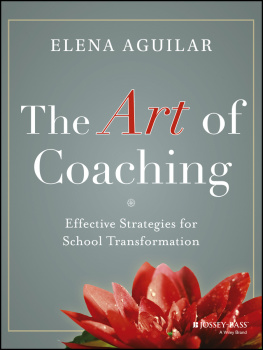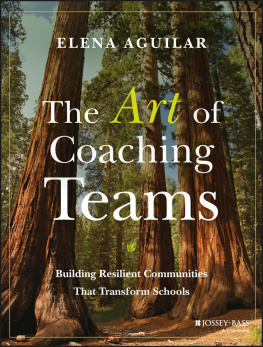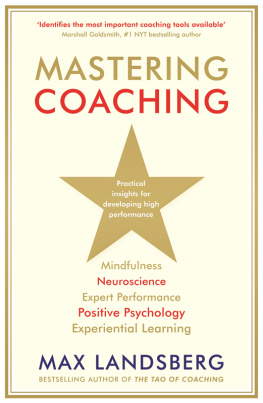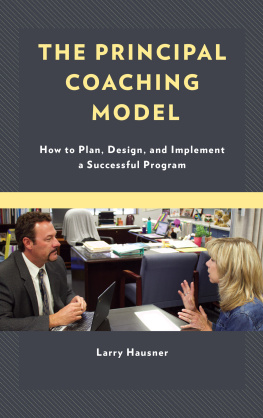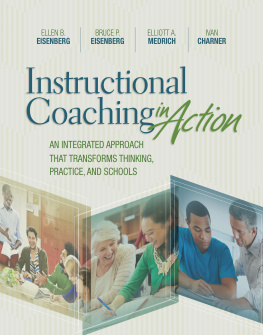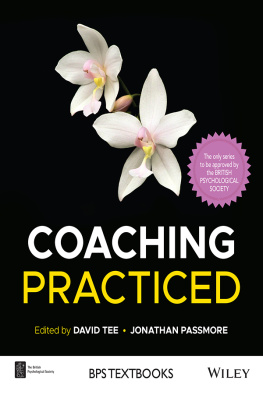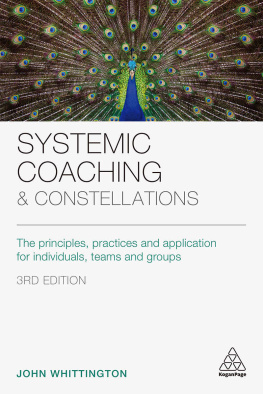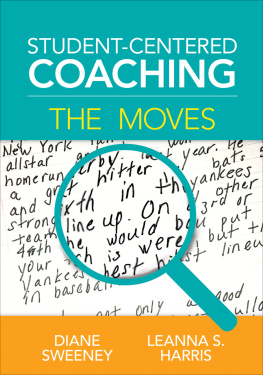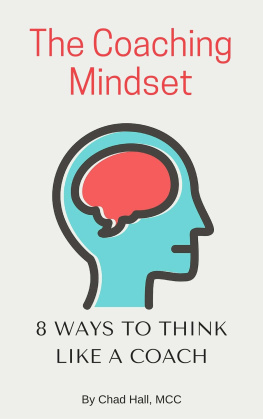
Copyright 2013 by John Wiley & Sons, Inc. All rights reserved.
Cover design by Michael Cook
Cover photo by @ Jelena Veskovic/iStockphoto
Published by Jossey-Bass
A Wiley Imprint
One Montgomery Street, Suite 1200, San Francisco, CA 94104-4594-www.josseybass.com
No part of this publication may be reproduced, stored in a retrieval system, or transmitted in any form or by any means, electronic, mechanical, photocopying, recording, scanning, or otherwise, except as permitted under Section 107 or 108 of the 1976 United States Copyright Act, without either the prior written permission of the publisher, or authorization through payment of the appropriate per-copy fee to the Copyright Clearance Center, Inc., 222 Rosewood Drive, Danvers, MA 01923, 978-750-8400, fax 978-646-8600, or on the Web at www.copyright.com. Requests to the publisher for permission should be addressed to the Permissions Department, John Wiley & Sons, Inc., 111 River Street, Hoboken, NJ 07030, 201-748-6011, fax 201-748-6008, or online at www.wiley.com/go/permissions.
Limit of Liability/Disclaimer of Warranty: While the publisher and author have used their best efforts in preparing this book, they make no representations or warranties with respect to the accuracy or completeness of the contents of this book and specifically disclaim any implied warranties of merchantability or fitness for a particular purpose. No warranty may be created or extended by sales representatives or written sales materials. The advice and strategies contained herein may not be suitable for your situation. You should consult with a professional where appropriate. Neither the publisher nor author shall be liable for any loss of profit or any other commercial damages, including but not limited to special, incidental, consequential, or other damages. Readers should be aware that Internet Web sites offered as citations and/or sources for further information may have changed or disappeared between the time this was written and when it is read.
Jossey-Bass books and products are available through most bookstores. To contact Jossey-Bass directly call our Customer Care Department within the U.S. at 800-956-7739, outside the U.S. at 317-572-3986, or fax 317-572-4002.
Wiley also publishes its books in a variety of electronic formats and by print-on-demand. Some material included with standard print versions of this book may not be included in e-books or in print-on-demand. If the version of this book that you purchased references media such as CD or DVD that was not included in your purchase, you may download this material at http://booksupport.wiley.com. For more information about Wiley products, visit www.wiley.com.
Library of Congress Cataloging-in-Publication Data has been applied for.
ISBN 978-1-118-20653-9 (pbk.);
ISBN 978-1-118-41943-4 (ePDF);
ISBN 978-1-118-42102-4 (ePub);
ISBN 978-1-118-54014-5 (eMobi)
FIRST EDITION
FOR MY MOTHER, LINDA,
MY FIRST AND FINEST COACH

Another world is not only possible, she is on her way.
On a quiet day, I can hear her breathing.
Arundhati Roy (2003)
Introduction
Some years ago, during a very difficult time in my coaching career, I was coached by Leslie Plettner, who was then with the Bay Area Coalition for Equitable Schools, a nonprofit organization supporting school transformation. It was hard to describe what happened when we met for our sessions at a caf, but I always left renewed and empowered, bursting with new understandings about myself and my work. Sometimes Leslie asked provocative questions, other times she guided me in looking at situations from a perspective I'd never considered, and often she pushed me to try something different in my workI usually felt stretched, but supported; my coaching improved quickly. After a while, I realized that I could express my fears and expose my worst flaws, and Leslie would still believe in me and work with me. Leslie communicated an unconditional acceptance that I had never encountered in schools.
During the time I worked with her, I found it hard to identify what Leslie did as a coach. I couldn't identify the specific coaching moves she made, I couldn't figure out how she was thinking or how she made decisions about what to ask me. She was an amazing coach, and I wanted to be just like her.
In the following years, as my coaching practice developed, I explored the complicated processes that result in effective coaching and learned how to see the elements that made up Leslie's coaching. This book is an attempt to make what goes on in an effective coach's mind visibleto make a coach's thoughts, beliefs, knowledge, core values, and feelings explicit so that they can be replicated by others. Coaching is an art, and just as the process of producing a piece of art can be broken down, so can coaching.
Art is a useful metaphor to help us understand coaching. Consider, for example, just a sliver of what a visual artist must know in order to produce a painting: how the chemical elements in the mediums he's working with interact with each other, how they are affected by humidity, and the order in which they need to be applied. A musician plans a piece of music, then carefully crafts and rehearses it many times before it is performed. Although art may seem magical, sometimes effortless, and perhaps impossible to replicate, it requires scientific knowledge and skills and an ability to precisely use a range of available tools and materials. The end product may be a delightful surprise, different perhaps from the artist's original vision, but a great deal of intention, planning, thought, and knowledge lie deeply embedded within the outcome.
Coaching can be perceived as a mysterious process, but in fact it requires intention, a plan, and a lot of practice; it requires a knowledge of adult learning theory and an understanding of systems and communication. An effective coach must possess certain analytical capacities and an ability to think sequentially. Coaching, like creating art, requires intuitive capacities, an ability to see something that is not yetbut could bein existence, and the willingness to surrender to the process and trust that a worthwhile product will emerge. Like any visual or performing art, coaching requires attention to detail as well as an appreciation for the whole, and an understanding that the artistry is in the process as well as the product.
Although a coach plans and applies a body of knowledge and skills, an artful coach also engages in the work creatively. Our education system is a heavy and serious place these days. The need to improve our schools is urgent. But when a coach taps into and harnesses creative energy, when the process is enjoyable, even fun, the end result is more likely to be transformational.
Coaching for Transformation
I coach for transformationtransformation of the adults with whom I work, the institutions in which they work, the lives of the children and communities they serve, and our society as a whole. I coach to help teachers, principals, central office administrators, and all educators transform their behaviors, beliefs, and being. The model of coaching that I propose holds transformation as the end goal; it also assumes that to meet this goal, the process must be transformational. Transformation describes both the destination and the journey.
Transformation is a term that is at risk of being overused and drained of meaning, so a definition is necessary here. The prefix trans- means across, on the other side of, beyondwhere we are going is unknown and yet to be defined. A transformation is an end result almost unrecognizable from its previous form, a change so massive and complete, so thorough and comprehensive that until we are there, it is unimaginable. For example, mist transforms when it solidifies into an iceberg; a caterpillar transforms when it becomes a butterfly. How can we create something we can barely imagine? Working toward something unclear and ambiguous can be uncomfortable. This process of creation will require us to suspend our beliefs about whether or not it can be done and to forge onward, creating and transforming in spite of our own preconceptions. Transformation, of course, can be positive or negative. The assumption in my definition is that the destination is a tremendous, positive improvement over the current state.
Next page
